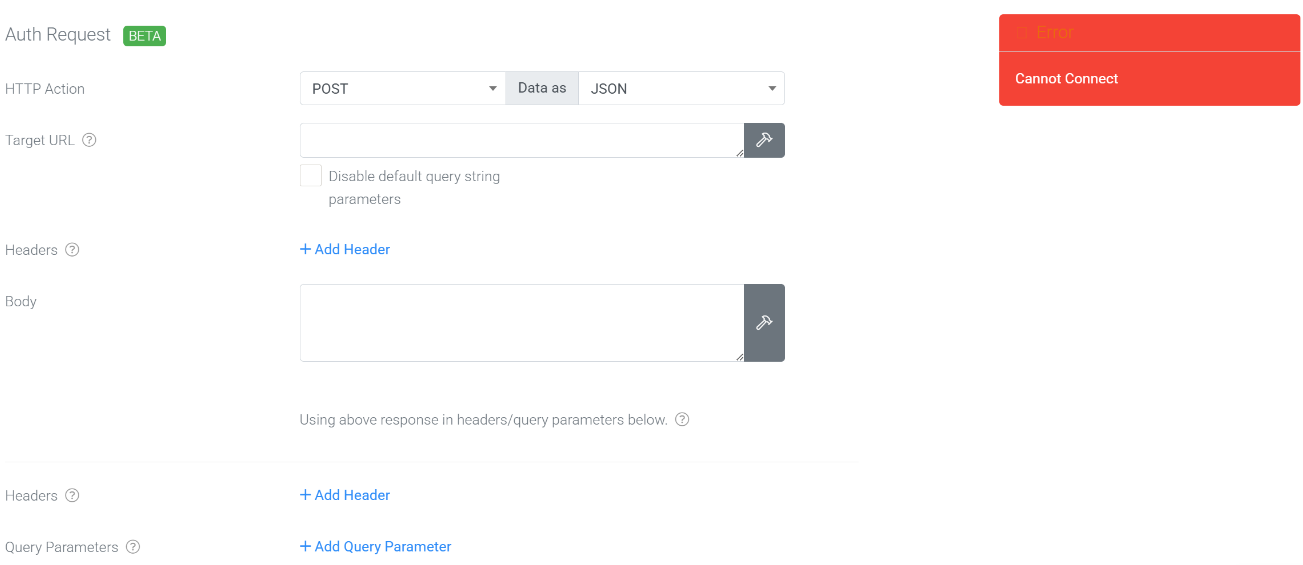
OAuth 2.0 is an authorization protocol that allows applications to access user data from other services without sharing the user's credentials. It enables users to securely grant limited access to their resources on one service to another application.
This connector allows you to configure static REST authenticated connections that you can reuse on other parts of the platform where a REST connection to the connected REST API service is required.
In this article
- What is OAuth 2.0?
- Why is a Connection required?
- Adding a Connection
- Adding an Auth Request Connection
- Adding an OAuth 2.0 Connection
What is OAuth 2.0?
OAuth 2.0, which stands for “Open Authorization,” is a standard designed to allow a website or application to access resources hosted by other web apps on behalf of a user. It replaced OAuth 1.0 in 2012 and is now the de facto industry standard for online authorization. OAuth 2.0 provides consented access and restricts the client app's actions on resources on behalf of the user without ever sharing the user's credentials.
Why is a Connection required?
A Connection is required to allow nomorePAPER to communicate with your OAuth 2.0 account before you can successfully add Form Connectors to push data or pull with Data Source Connectors from other platforms.
- Rest Field
- Rest Form Connector
- Rest Data Source Connector
- REST External User Connector
Adding a REST Connection
When logged into the web portal, navigate the side menu Connected Data > Connections.

On the Connections page, hit Add Connection on the top right.

Click on the REST option to add the connection.

Once you've added the REST connection, you can configure either a regular Auth Request connection or an OAuth 2.0 connection that can be reused by any other form that requires the same connection.

You can select which authentication method your REST Connection will support by selecting the appropriate one, as shown in the screenshot above.
Adding an Auth Request Connection
This option allows you to configure a REST connection that utilizes either API key-based authentication, Basic authentication, or Token-based authentication. You can configure these authentication methods here for reuse on other forms or data source connectors you may wish to use in the future.

Adding an OAuth 2.0 Connection
Once you've selected the option to add an OAuth 2.0 Connection, fill in the required properties and then save. This will reload the interface with an Authorize button that you will need to press to sign into the 3rd party service and authorize the connection so that our platform can push or pull data from your account.

| Authentication URL | Endpoint URL to establish a connection to the retrieved Authorization code |
| Auth Code Request | Query parameters needed in the Authentication request |
| Token URL | Endpoint URL to request to get the Token code |
| Token Request | Query parameters needed in the Token request |
| Callback URL | The URL that the REST service will call back to once the authentication is successful. |
| Authorize | Button to connect your connection to the 3rd party endpoints. |
| Headers | The default header that your REST API connectors will use. |
| Query Parameters | The default Query Parameters that your REST API connectors will use. |
If your connection is authenticated successfully, the red block showing "Cannot Connect" will change to green and show "Connected". At this point, your REST connection is ready to use on your forms and data sources.
